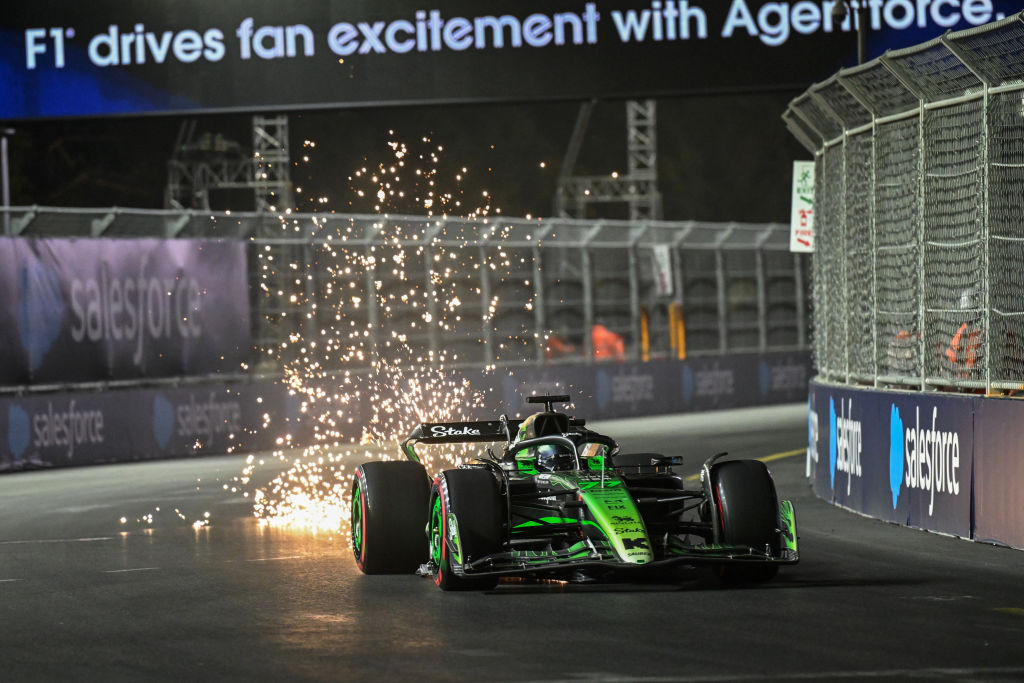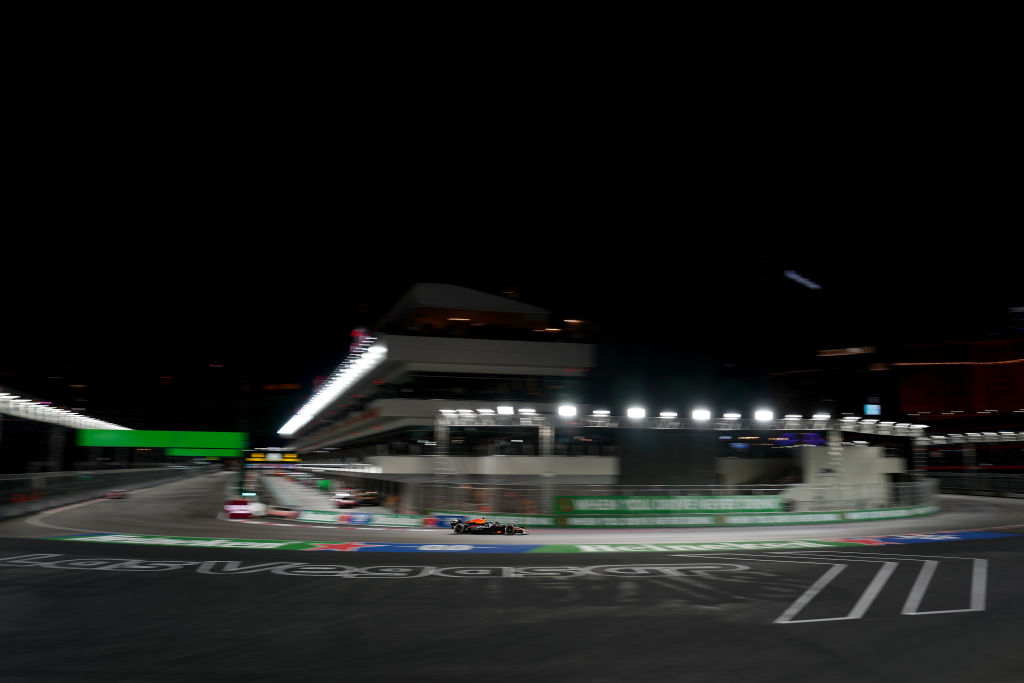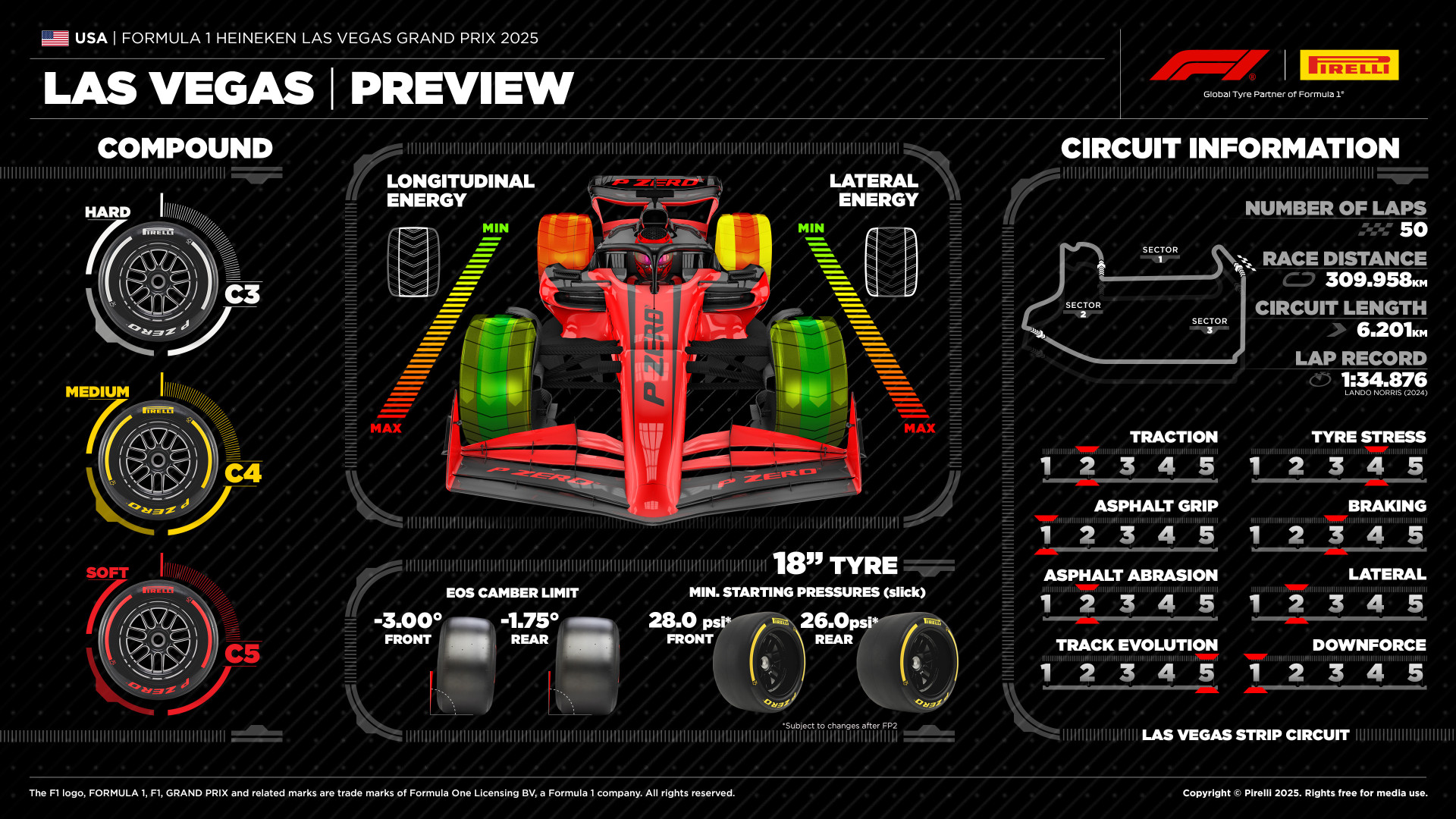The third Las Vegas Grand Prix is once again set to be the coldest race of the F1 season, with temperatures in the low 50s for the night race in November. This will be a unique challenge for every team, and no one will tell you more about its uniqueness than Mercedes’ Andrew Shovlin, the team’s trackside engineering director who scored a one-two here last year.
“Las Vegas is difficult. This is a track where we bring in a low-downforce Monza package and run it more or less. And we’re actually at quite a high altitude (2,000 feet). -Ed.), further downforce is lost due to the fact that the air is thinner.
“With low downforce, it’s very difficult for the driver to control the car. But the straights are long, so running a big wing isn’t an option, because you’ll lose a lot on the straights, and you’ll never recover.”
“This is a challenging street track. It’s very, very fast. The walls are very close. You have to use all the circuits available. Mistakes are punished. But the drivers just do what they always do: build up as grip improves.”
“Here you not only get the level of downforce, but if you have the temperature of the tires you also get the grip. That’s the important thing. It’s not like a normal circuit where you really feel the difference in the level of the wing. The most important thing here is can you get the tires in the window? And if you have it and the other person doesn’t, you could end up being a second faster.”

In slow corners, you need to drive the car lower accordingly. Sam Bagnall/Getty Images
“We have some options available at wing level. Our approach is to not make unnecessary differences until 2024 and it depends on where we start on the car.”
“We have to take into account the low grip of the track at the start, so we need to change the position of the car to give it more stability than the expected position in qualifying. And there are a lot of options available.
“But once we know what kind of problems we’re facing, are the tires hot enough? Are they too hot? Are they oversteer balanced or understeer balanced? Are they grained in the tires? Once we know the answers to those, we can look at specific solutions to those problems.
“It’s a low-speed corner, so you have to drive the car low. So in the apexes, you want to get the car as close to the ground as possible, so on the straights you’re running into the road. But for a street circuit, it’s actually pretty smooth. There are some noticeable bumps, but overall it’s pretty smooth and you can get the car pretty low.”

Although it is a street circuit, the road surface is relatively smooth, but there are still many things that can wear out the tires. Alex Bierens de Haan/Getty Images
“We have some really big stops like Turn 14, which is where we brake the most on the whole calendar. But to be honest, the most important thing about this lap is how we got the temperature up at the start of the lap.”
“It’s a pretty busy opening sequence. If you don’t have grip there, the front either locks up or slides. So the key is can you get that temperature up on your out lap? And this circuit is one of those circuits where if you start your lap well, it usually ends well. Because on a normal qualifying lap, you’re actually trying to keep the tires cool. If the driver snaps, that punishes them by increasing the temperature and reducing the grip. This is actually one of those things where the driver doesn’t have to worry about that, so he can let the car slide a little bit. It’s not taxing on the drivers like most other circuits.
“You have to look at tire temperature in different ways. You need to get the tire temperature up to soften the rubber, so you need to get the tire temperature up to create grip. That’s one of the things we’re doing on the outlap.”
“But what’s happening on the road is something much more ephemeral than that. And as soon as you hit the brakes, the surface temperature starts to rise because you’re slipping. As you get to the apex, as you apply more power, that surface temperature gets higher and higher. And that’s what really drops down on the straights.”
“One of the challenges here is that when the driver actually hits the brakes, the tires are too cold to create good grip. And that initial impact can end up with a little bit less grip and the front locking up more easily. You don’t get that nice feeling of the rear of the car being locked in.”
“But you have to trust that once you get into the braking phase, the temperature will come up and the tires will start to grip. How the grip is obtained is one of the things that they are getting used to little by little in free practice.”
“We often see different performance rankings here. It is difficult to compare with other circuits because the Barcelona circuit is the only one that experiences winter testing with such temperatures and the circuits are also very different.”
“If you take air and track temperatures out of the equation, it won’t be that different from Baku or maybe Montreal, but that will put the tires in an area that won’t race at any other circuit on the calendar.
“That’s what makes this circuit so unusual, apart from the fact that it’s a pretty unique place. When you saw where they were going to host the race, you thought it would be almost impossible to build a sensible circuit here. But actually, it’s a fun circuit. It’s going to give us a good race and hopefully we’ll have a similar result on Saturday night.”
overview:
Race distance: 50 laps/192.6 miles
2024 pole time: 1 minute 32.312 seconds (George Russell, Mercedes)
2024 Winner: George Russell, Mercedes

Before each Grand Prix, Pirelli provides teams with the earliest theoretical race strategy scenario based on the specific tire compounds available that weekend. This is defined by extensive calculations that take into account a number of tire-related factors.
This approach requires a different methodology than the one used by the team, even if the objectives are similar. All data is processed by proprietary software designed to identify the best strategy for a single vehicle on the track, with the aim of completing the race in the shortest possible time.
The first information analyzed concerns performance differences between the compounds identified in the pre-event analysis performed by the Modeling and Simulation Group. In addition, historical data on previous year’s tire degradation on the same track and data from the same compound already used in previous races this season will be added.
An important parameter in the calculation is the performance life. This is the maximum number of laps a tire can cover before its performance deteriorates to the point where it is better to replace it. These and other factors allow us to estimate lap times for each compound, and by also taking fuel load variations into account, we can identify the ideal window for tire changes.
A key factor that teams consider very important when deciding on a one-stop or two-stop strategy is the time it takes for the car to get down the pit lane, change tires and get back on track, which varies by circuit. The analysis is updated throughout the race weekend and includes data from track sessions and what Pirelli engineers learned from the product.
Teams often use a technique known as the Monte Carlo method because they have more data about their cars. This also takes into account random variables such as traffic volume, the likelihood of a safety car being deployed, and the ease of overtaking on each track, especially in DRS zones.
Heineken Las Vegas Grand Prix weekend schedule (all times Eastern Time):
Thursday, November 20th
7:25pm – 8:30pm – Free Practice 1, ESPNEWS
10:55pm – 12am – Free Practice 2, ESPN2
Friday, November 21st
7:25pm – 8:30pm – Free Practice 3, ESPNEWS
10:55pm – 12am – Qualifying, ESPN2
November 22nd (Saturday)
10:55pm – 1am – Las Vegas Grand Prix (50 laps or 120 minutes), ESPN



